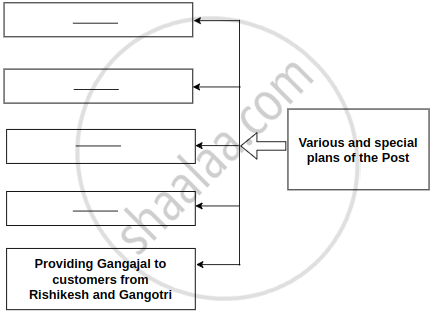Topics
Renaissance in Europe and Development of Science
European Colonialism
India and European Colonialism
Colonialism and the Marathas
India: Social and Religious Reforms
Indian Struggle Against Colonialism
- Struggle before 1857
- The Freedom Struggle of 1857
- Background of Founding the Indian National Congress
- Foundation of the Indian National Congress
- 'Moderates' and 'Extremists'
- Armed Revolutionaries in India
- Mahatma Gandhi: Non-violent Resistance Movement
- Indian National Army (Azad Hind Sena)
- 'Quit India' Movement of 1942
Decolonisation to Political Integration of India
World Wars and India
World : Decolonisation
Cold War
India Transformed - Part 1
India Transformed - Part 2
Notes
Means of Communication:
1) Postal Department:
In 1766, the British established the post office in India. Thus, the ‘Indian Postal Department’ is more than 250 years old. The postal department, which once only delivered letters, has undergone a total reformation. It has entered the field of banking. The postal department has introduced various schemes such as, ‘Postal Savings Accounts’, ‘Term Deposits’, ‘Public Provident Fund (PPF)’, ‘Kisan Vikas Patra’, ‘Sukanya Samruddhi Account’, and so on. To improve its services, in all 23,557 postal offices were brought under ‘Core Banking Solutions’, till 2018. Automated Teller Machines (ATM) was installed at many branches. Mutual Fund products of ‘Unit Trust of India’ were made available to customers at postal offices. The postal department is also offering money transfer services to Non-Resident Indians.
2) Speed Post:
The service of ‘Speed Post’ changed the very nature of the Indian Postal Service. This service was started in 1986. Many people take advantage of this service, to the tune of more than three crores of letters and parcels being delivered every month. The postal department sends a message of successful delivery on the mobile phone of the sender. This facility has made the speed post service more reliable. In addition, the postal department now offers courier services like delivery of passport, business parcels, cash-on-delivery, logistics post, and air freights. Earlier, if anybody wanted to post letters or gift articles, etc. on a larger scale, the tasks like putting the letters in envelopes or packaging of the gift articles, the sender had to do them personally. Now the post office offers the packaging service at an extra charge. This has increased the business of the postal department. There are one lakh and fifty-five thousand post offices, which are offering services like paying various bills, sending festive greetings cards and similar objects.
The postal department has started a very novel service since 2016 of delivering Ganges water (Ganga Jal) at personal addresses from Rishikesh and Gangotri. Along with it, facilities like buying personalised postage stamps with a personal photograph, buying newly issued postage stamps at philatelic centers, special schemes for philatelists are available at ‘Post Shops’ opened at 80 post offices.
The postal department is also concerned with the requirements of philatelists. Philately is a valued hobby at the international level. Special limited issues of artistic postage stamps are published by the postal department. In the year, from April 2017 to March 2018, the postal department published 50 issues of postage stamps based on various themes. It included the subjects like Meghalaya Caves, rare Indian birds, Ramayan, Mahabharat, Indian cuisine, Winning designs of ‘nests’ from a children’s competition, ‘Heritage’ architectural wells (for example, ‘Rani ki Vav’), Hand fans, Solar system, Indian headgears, Centenary of the Champarnya Satyagrah, etc. The postage stamps of Ramayana were distributed in 40 countries through the Indian embassies.
Philatelic Deposit Account holders have the facility of placing standing orders on the philatelic bureau for the supply of new stamps, First Day Covers, Brochures as well as new Postal Stationery with or without Advertisement.

